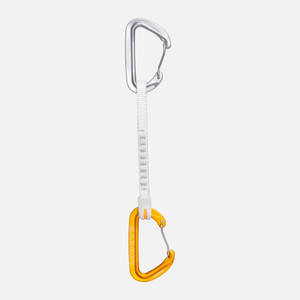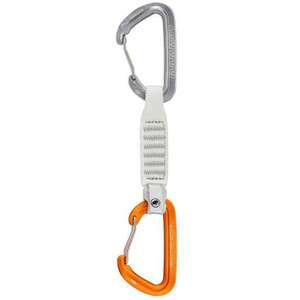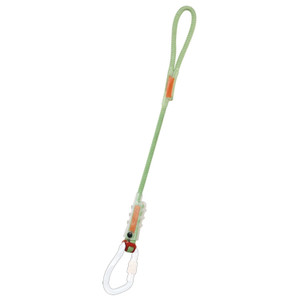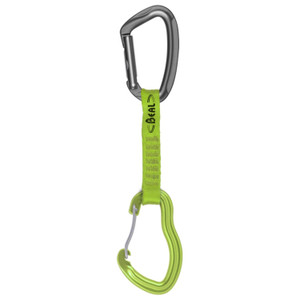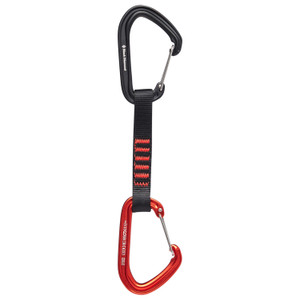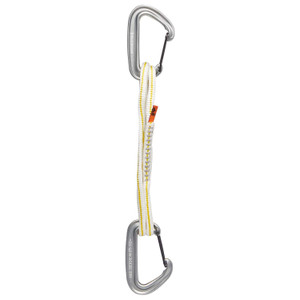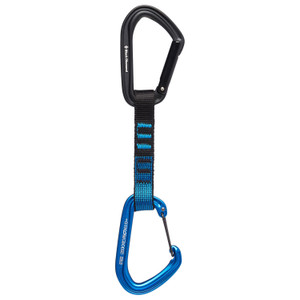
Climbing quickdraws (often just called quickdraws or draws) are essential pieces of gear used in sport and trad climbing to connect the climber’s rope to protection points (usually bolts or gear placements) on the climbing route.
What Is a Quickdraw Made Of?
A quickdraw consists of:
-
Two carabiners
-
Top carabiner: Clips to the bolt or gear anchor.
-
Bottom carabiner: Clips to the climber’s rope.
-
One may have a straight gate (top) and the other a bent gate (bottom) for easier clipping.
-
-
A dogbone (the sling)
-
A strong, sewn piece of nylon or Dyneema that connects the two carabiners.
-
Varies in length (usually 10–25 cm).
-
Some have rubber inserts to keep the bottom carabiner in place for easier rope clipping.
-
What Are Quickdraws Used For?
-
Sport climbing: You clip quickdraws into pre-placed bolts as you ascend.
-
Trad climbing: You clip them into your placed protection (like cams or nuts).
-
Function: They allow the rope to run more smoothly and reduce rope drag.
-
Safety: If you fall, the rope runs through the quickdraws to your belayer, absorbing energy and protecting you.
Quickdraw Setup Tips
-
The top carabiner goes to the wall; it can be used repeatedly for clipping bolts.
-
The bottom carabiner (rope side) should be kept clean and used only for rope contact to avoid damaging the rope.
-
Always check for gate orientation: Gates should generally face opposite directions and away from the climbing path to avoid accidental unclipping.
Types of Quickdraws
| Type | Best For | Dogbone Length | Notes |
|---|---|---|---|
| Sport Quickdraws | Sport climbing | Short (12–18 cm) | Durable, easy to clip |
| Trad Quickdraws | Trad/multipitch climbing | Longer (18–25+ cm) | Lightweight, reduces drag |
| Alpine Draws | Alpine/multipitch | Extendable (60 cm sling) | Great for managing rope drag |



